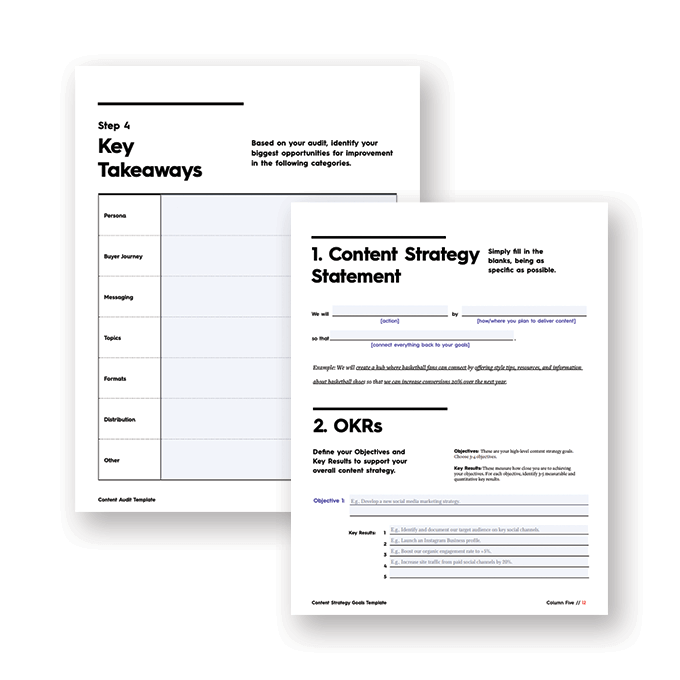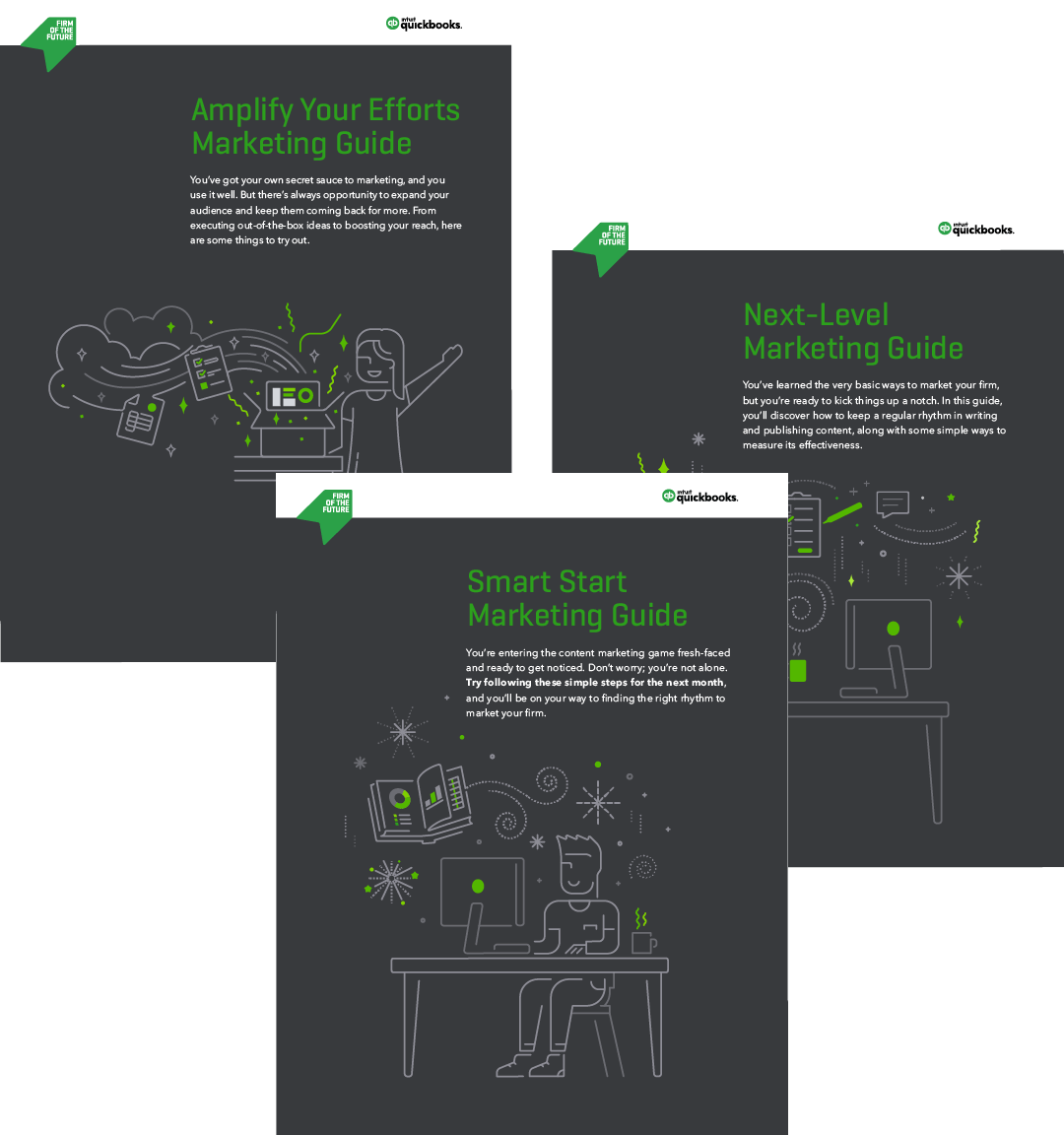Whether you’re a B2B or B2C brand, one of the biggest mistakes you can make is creating content that your brand cares about. What matters most is what your audience cares about, and what is the #1 thing they care about? Their own problems. The good news? Your brand has the solution to those problems—in many ways. Beyond your products/services (which are ultimately the solution you want them to buy into), you have a wealth of knowledge that can speak to your audience’s pain points and problems. And when you translate that knowledge into compelling content, you have marketing gold.
Pain is a powerful force, and tapping into your audience’s pain is one of the most powerful ways to connect with them.
If you’re stuck on how to do that (or just feeling uninspired), we’re sharing 10 simple ways you can create content that speaks to your audience’s pain points—and convert them in the process. But first you need to undertsand exactly what those pain points are.

How to Find Your Audience Pain Points
Empathy is the core of good content marketing. Getting to know your audience’s challenges, commiserating with them, and helping them through those challenges helps you form a powerful bond—and position your brand as the hero. But before you do that, you need to truly understand what problems they struggle with. How do you identify those problems?
- Have real conversations. Phone, email, chat, social media—it doesn’t matter what channels you use to interact with your customer base. Ask them directly about the specific problems they’re facing. Pro tip: A simple social media poll is a great way to get good insights.
- Look at industry research. Recent research, white papers, thought leader interviews, and reports can be a fantastic source to understand what’s going on in your industry and in your audience’s mind. (In fact, we decided to write this very blog post because industry research shows that one of the biggest pain points for CMOs is creating compelling content for their audience.)
- Look at your own most popular content. What are your top 10 blogs or social posts? They resonate with your audience for a reason, and they likely speak to a core pain point or need.
Tip: Once you know your audience’s pain points, create ideal customer profiles and marketing personas to segment your audience and really hone in on their unique challenges.
10 Tips to Turn Pain Points into Marketing Content
No matter how big or small your marketing department is (or how big your budget is) there are so many ways to turn your audience’s pain points into content. Use these prompts to brainstorm your next best big idea.
1) Create a blog series answering their most burning questions.
Education is the first step to solving any problem, and we all turn to the Internet for answers. Rich blogs are the best way to rank for the most valuable keywords, so turn your expertise into an educational series that answers the most relevant questions about a particular subject.
Tip: Type any subject into Answer the Public, and you’ll get a batch of the most commonly asked questions related to it.
Example: When we tackle a new subject, we like to provide education from every angle. For example, to help our B2B audience, we’ve written about the biggest mistakes in B2B, the biggest barriers to finding a good B2B agency, the biggest buying trends in B2B, and more.
2) Create a Twitter tip thread addressing the problem.
If you have a low budget or little support in terms of content creation, you’d be surprised by how much reach a good Twitter thread can get. You can make yours especially clickable if you frame it as “the biggest mistakes you’re making” or “the secret tips no one is sharing.”
Tip: Turning your existing blogs into a thread is a low-lift way to get more mileage out of existing content. Find out more about how microcontent like this can help your brand increase its reach.
Example: Val Katayev’s thread on creating a billion-dollar sales strategy is full of tips, research, and his real-life experience.
I’ve generated over $1 billion in sales using ONE strategy.
Used it in every recession – 2000, 2009, and 2020.
I’ve never shared it publicly before.
This thread might make you a millionaire.
— Val Katayev (@ValKatayev) November 6, 2022
3) Create a small infographic series that simplifies a process or idea.
Not only can your content solve your reader’s problems but it can also do it more effectively than the competition if you can successfully break down an idea, provide tips, or offer information in a simple visual format. Instagram carousels are particularly good for this. Not only does it make your grid visual but the swiping increases engagement and helps your account move up in the algorithm.
Tip: You can turn an existing infographic into a carousel by extracting individual portions, or you can publish individual portions, then turn them into a full-size infographic to share on other platforms. Find out more about how a divisible content strategy can help you make the most of your content.
Example: We love how Ellevest fills their Instagram feed with at-a-glance graphics that educate their audience about financial health.
View this post on Instagram
4) Create a lazy person’s guide.
People are plagued not only by their problems but by the time it takes to research and solve them. You can become a valued resource by doing the legwork for them by presenting a larger piece of content as the “lazy person’s guide” to, well, whatever. A complete guide that tackles a problem in a thorough but, most importantly, easy-to-navigate format is endlessly valuable.
Tip: Make sure to break it up with actionable tips and visuals, which make content feel richer.
Example: Neil Patel’s The Lazy Marketer’s Guide to Customer Acquisition is a great example of a strong guide with a catchy title.
5) Share a story about how you faced a big problem—and won.
Honesty, transparency, and vulnerability are incredibly appreciated, especially when it relates to your own struggles with a particular problem. If you have tried to solve a problem (or even failed), you have certainly learned a few lessons along the way, all of which can be helpful to your audience. Remember: The more you demonstrate your real-life experience with the problem, the more people will trust you to solve theirs.
Tip: It’s especially smart to create content around your own brand’s origin story. Whether you set out to feed your child with the most delicious and healthy kid meals, or you decided to build the most efficient security software possible, describing your own struggles with an issue is a powerful way to connect and endear yourself to your audience.
Example: We’ve shared the story of the biggest lessons we’ve learned in the business, the best creative lessons we’ve learned, and more.
6) Create a free template.
It’s one thing to tell people how to solve a problem; it’s another to give them a way to do it. Free templates are one of the best and most effective ways to do that. Whether it’s a simple checklist to help them stay organized or a framework for a specific exercise, a template is a great way to help them work through a pain point.
Tip: Templates can come in all forms—a Word document, an Excel spreadsheet, a Google doc, etc. We provide them as interactive PDFs.
Example: We have created a number of handy templates to help our readers improve their marketing in all sorts of ways. Whether it’s identifying their brand heart or messaging, these are simple ways to help them solve their problems and provide value.

7) Ask an industry expert how they’d solve the problem.
From interviews and Q&As to podcasts and guest blogs, there are all sorts of ways to engage with experts and thought leaders in your community. Ask them about pain point topics, then share their unique insights with your audience. As an added bonus, when you feature an expert in your content, they’re likely to promote it to their audience too.
Tip: There are plenty of experts in your own company whose insights can be incredibly valuable, too. See our tips to turn your coworkers into content creators.
Example: Hubspot shares expert tips on Instagram, using a series of pull quote graphics. This is a simple and easy way to give experts a voice on your platforms.
View this post on Instagram
8) Create an interactive tool.
This one is a little more lift than a simple template, but it can pay off in huge ways. Whether it’s a simple quiz that helps them figure out the right solution for them, or a tool like a calculator, something that helps them solve their problem (or makes it easier to do it) is incredibly useful.
Tip: If you’re not sure what type of tool may be most useful, follow these tips to brainstorm great interactive marketing ideas.
Example: To help Intuit connect with small accounting firms, which traditionally struggle with marketing their own businesses, we created a 2-minute interactive marketing quiz that produced a custom marketing plan based on their unique needs.


9) Create a simple tutorial video.
Helping people solve their problems is much easier if they can see you actually do it (or explain how to do it), and video is one of the best mediums to do that. Why? Because video targets both visual and auditory channels, helping people absorb the content much more effectively. Whether it’s a simple whiteboard video, explainer video, or even a low-production TikTok video, showing (not just telling) can be incredibly impactful.
Tip: We know not everybody has the budget for large-scale production. If you need something easier to manage, here are six clever ways to produce video (even remotely).
Example: Video platform Wistia knocks this out of the park with 25 Adobe Premiere Tips in 60 seconds. It’s a simple, short video that is packed full of tips and helps people edit videos more effectively.
View this post on Instagram
10) Share examples of how other people have solved that problem.
Real-life examples are always more convincing (and relatable) to audiences, no matter what solution you’re trying to show. (In fact, when we polled our own newsletter subscribers about the content they’d like to see, they identified roundups and examples as one of their favorite types of content.) Additionally, simple roundup examples are great for SEO.
Tip: The more examples you include, the more likely you are to rank for SEO. So try to make your roundups robust.
Example: Posts like 100 best motion graphic examples or 16 ways to think of infographic ideas are years old, and yet they continue to be in our top 10 most popular posts year after year.
How to Make the Most Impact with Your Content
No matter what type of content you’re creating, you can ensure it speaks to your audience if you follow these tips.
- Choose the right format. Make sure the medium matches the message. See these 13 types of content marketing to find out what format works for your story.
- Make them feel like you’re talking to them—personally. No one wants to hear from a faceless corporation. Follow these tips to make sure your content is human.
- Don’t try to sell in your marketing. But do follow these tips to create a seamless transition from marketing to sales.
That said, creating compelling content can take a lot of work. If you’re building an ambitious content strategy and need the right partner, let us know. We’d love to help you solve your customers’ pain points—and become our next successful case study.





